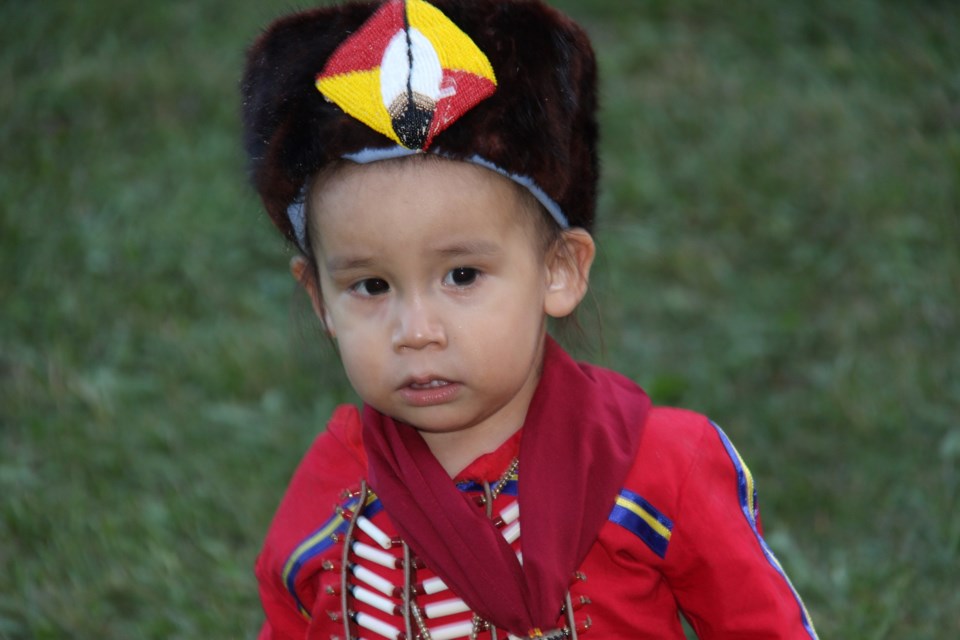The 2016 Batchewana First Nation Pow Wow was more than frybread, regalia, dancing and drumming.
Held Saturday and Sunday at the Rankin Reserve pow wow grounds, this year's edition of the popular event was also a statement of solidarity with the Standing Rock Sioux Tribe of North Dakota.
In recent weeks, thousands of protesters from across North America have been gathering on the banks of the Cannonball River in solidarity with the Standing Rock tribe's efforts to protect its water and sacred sites.
The nonprofit alternative Real News Network has referred to the Standing Rock pipeline protest as the "largest gathering of indigenous peoples in a century."
The tribe is trying to block construction of a $3.8-billion oil pipeline that will span four states from the Dakotas to Illinois.
Calgary-based Enbridge Inc. is investing $1.5 billion in the project.
A U.S. federal judge is expected to rule this week on whether work on the Energy Transfer Partners Dakota Access pipeline should be allowed to continue.
Speaking at the Rankin pow wow grounds on Saturday, Batchewana First Nation Chief Dean Sayers talked about the Standing Rock protest and the protesters who are gathering there.
Chief Sayers then spoke of a meeting he attended after the 1990 standoff at Oka, Quebec, of warrior societies - secret groups that believe in a sacred responsibility to safeguard the life and territory of their homelands.
It was noted then, Sayers said, that virtually all of the warrior leaders had skirted the barricades and found their way inside to join the Oka resistance.
The warrior leadership was extremely vulnerable then and if the police or the Canadian Forces had used more violent means, the work of warrior societies could have been set back generations.
So it was decided that the leadership would never again place itself in that situation by gathering in the same place, Sayers said.
As many now join the Standing Rock protest, Chief Sayers it's equally important for people to "start fires in their own communities."
"Sacred fires. Spiritual fires. Connecting with our ancestors and invoking their vision for us and following our original instructions," he later told SooToday.
"Those fires are very spiritual and they bring our community together. They are a sign to each other that we are all in line in our thinking and we're united. It's a really incredible vision that I've heard from the elders around having fires in every community again."
"Fires are, in themselves, their own spirit, their own ceremony. The elders I've been speaking to in the last 10 years have been talking about the legislation of fires, and how we're getting so far away from befriending and being close to our friends, our relative, the fires."
"You can't even have a bonfire. Nobody knows how to manage a fire anymore. Nobody knows prescribed burns."
"Fires are an important part of how we communicate. Fire is integral to our community, how we socialize nation-to-nation and amongst ourselves. It's how we support each other. So right now, what we do a lot of times is that when something significant [happens] and we want prayers, we'll light a sacred fire for four days."
"People come and put their prayers in there. It unites us all across the land. That's what the warriors' societies and the elders were saying at the gathering of the warriors' societies - was we need to rekindle and start those fires again in all of our communities right across these lands," Chief Sayers said.
Learn more about Standing Rock
Taking a stand at Standing Rock (David Archambault II, chairman of Standing Rock Sioux Tribe)
Spirit wIns and media lies (Georgianne Neinaber, Huffington Post)
Life in the Native American oil protest camps (BBC)
Stand with Standing Rock - Anglican Church of Canada
Violence erupts at North Dakota pipeline protest (The Associated Press)
